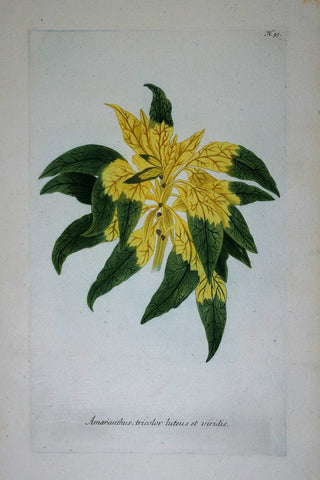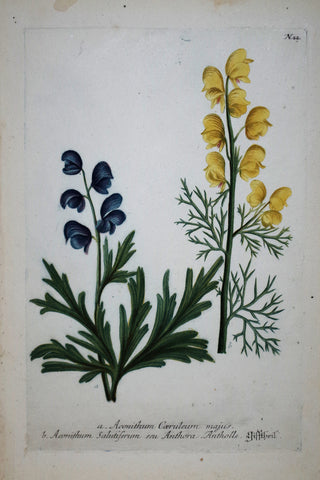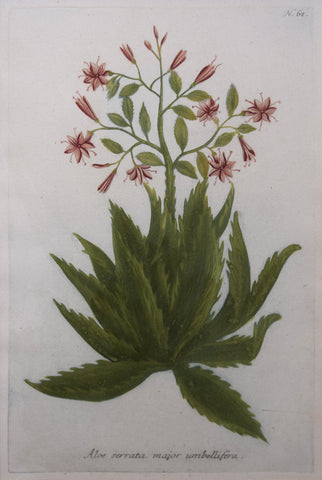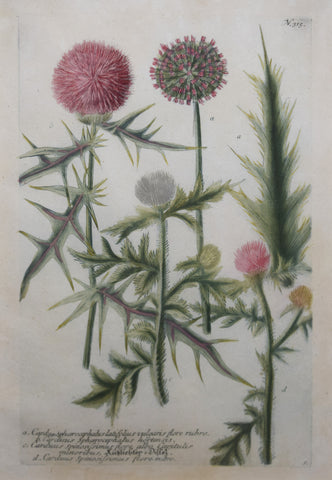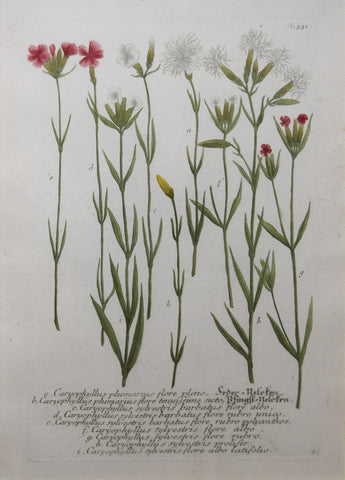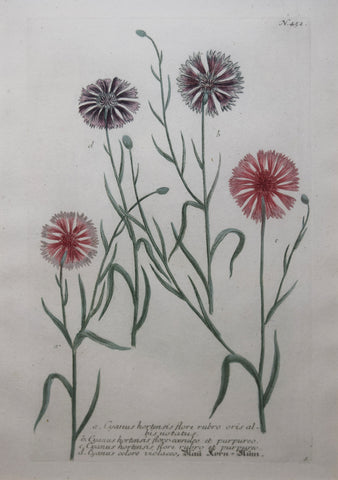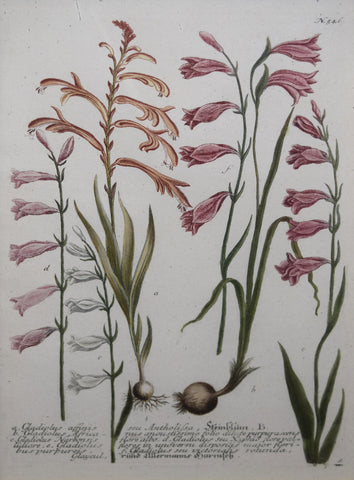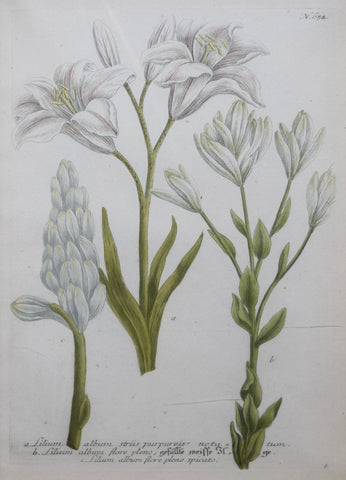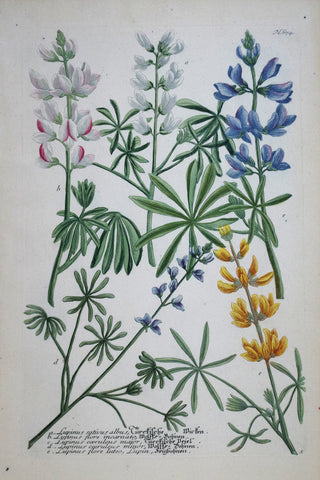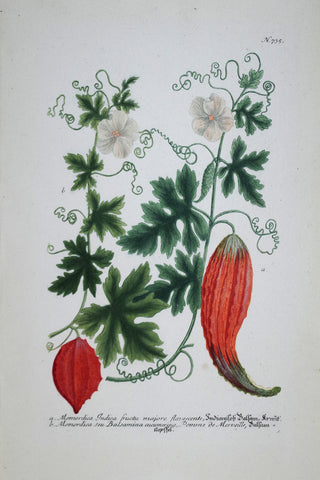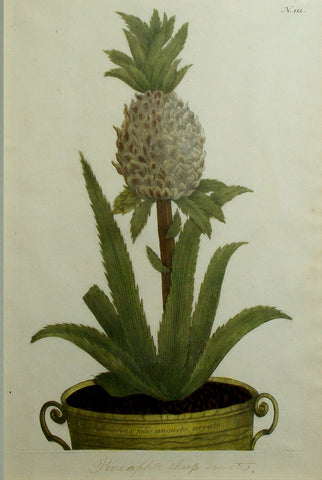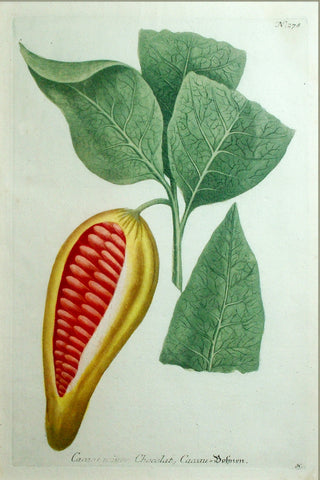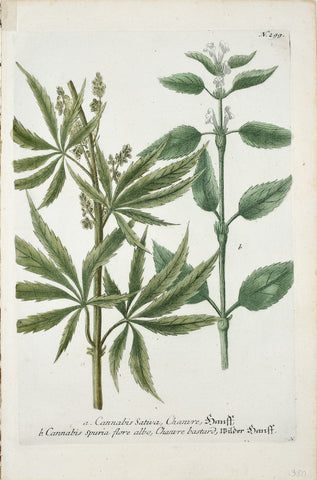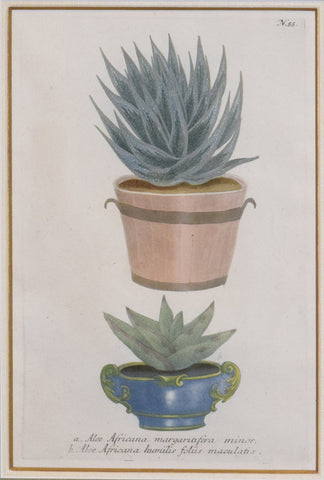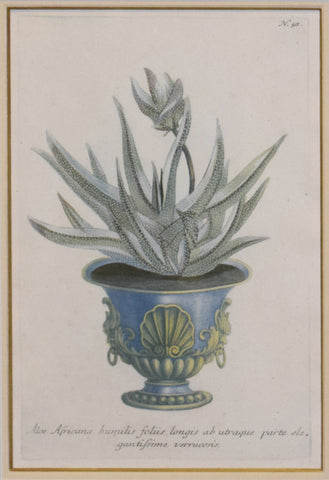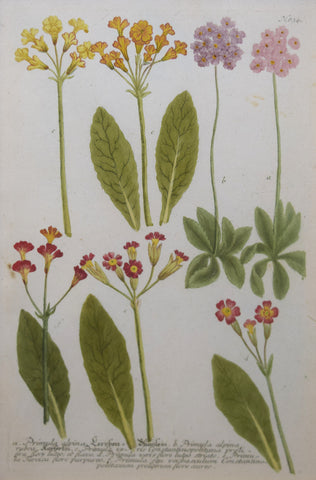Search By Artist
Johann Wilhelm Weinmann (1683-1741)
with Ehret, Georg Dionysius (1708-1770) - Dietrichs, J.G.N. -
Phytanthoza iconographia; sive Conspectus aliquot millium, tam indigenarum quam exoticarum, ex quatuor mundi partibus, longa annorum serie indefessoque studio ... collectarum plantarum, arborum, fruticum, florum fructuum, fungorum. Text by J.G.N. Dietrichs, L.M. Dietrichs, and A.K. Bieler. Regensburg: 1735-1737-1745.
Mezzotint engravings with original hand-coloring
A comprehensive and beautiful record of known 18th-century flowers, fruits, and vegetables. Financed by Weinmann, director of the oldest pharmacy in Regensburg, who commissioned amongst other artists the now celebrated Georg Ehret. It was his first major commission, but he was not credited, and only received half of his promised wages, on the grounds that he had only supplied about half of the 1,000 that Weinman was expecting of him. However, even at this early stage in his career, Ehret's style is easily identified, particularly in various aloes and cacti growing in distinctive pots and urns that is a feature of Ehret's work for his own "Plantae et papiliones rariores" (1748-1759).
The "Phytanthoza ..." was a very important influential book. Filippo Arena borrowed heavily from it for his "La Natura, e coltura de' fiori" (1767-1768), and the dutch edition was imported to Japan where it "gave rise to a major change in illustrated botanical literature... and led to the productions from 1830 onwards of the illustrated herbal "Honzo Zufu..." by Iwasaki Kanen in ninety-six volumes" (Blunt pages 155-156).
Like his father before him Ehret trained as a gardener, initially working on estates of German nobility, and painting flowers only occasionally, another skill taught him by his father, who was a good draughtsman. Ehret's "first major sale of flower paintings came through Dr Christoph Joseph Trew, eminent physician and botanist of Nuremberg, who recognized his exceptional talent and became both patron and lifelong friend. Ehret sent him large batches of watercolours on the fine-quality paper Trew provided. In 1733 Trew taught Ehret the botanical importance of floral sexual organs and advised that he should show them in detail in his paintings. Many Ehret watercolours were engraved in Trew's works, such as 'Hortus Nitidissimus' (1750-86) and 'Plantae selectae' (1750-73), in part two of which (1751) Trew named the genus Ehretia after him.
"During 1734 Ehret travelled in Switzerland and France, working as a gardener and selling his paintings. While at the Jardin des Plantes, Paris, he learned to use body-colour on vellum, thereafter his preferred medium. In 1735 he travelled to England with letters of introduction to patrons including Sir Hans Sloane and Philip Miller, curator of the Chelsea Physic Garden. In the spring of 1736 Ehret spent three months in the Netherlands. At the garden of rare plants of George Clifford, banker and director of the Dutch East India Company, he met the great Swedish naturalist, Carl Linnaeus, who was then formulating his new classification based on plant sexual organs. Ehret painted a Tabella (1736), illustrating the system, and sold engravings of it to botanists in Holland. Some of his paintings of the exotics were engraved in Linnaeus's "Hortus Cliffortianus" (1737).
"[Ehret] signed and dated his work, naming the subject in pre-Linnaean terms. He published a florilegium, "Plantae et papiliones rariores" (1748-62), with eighteen hand-coloured plates, drawn and engraved by himself... Ehret also provided plant illustrations for several travel books. His distinctive style greatly influenced his successors" (Enid Slatter for DNB).
Arnold Arboretum p. 738 (with an additional French title-page in vol. I); BM(NH) V, 2285; Brunet II, 704 (under Dietrichs); Dunthorne 327; Great Flower Books (1990) p.151; Cleveland Collections 388; Nissen BBI 2126; Pritzel 10140; Stafleu-Cowan TL2 17050

